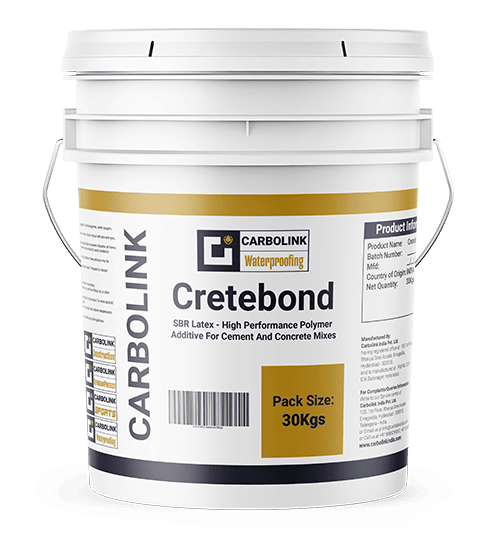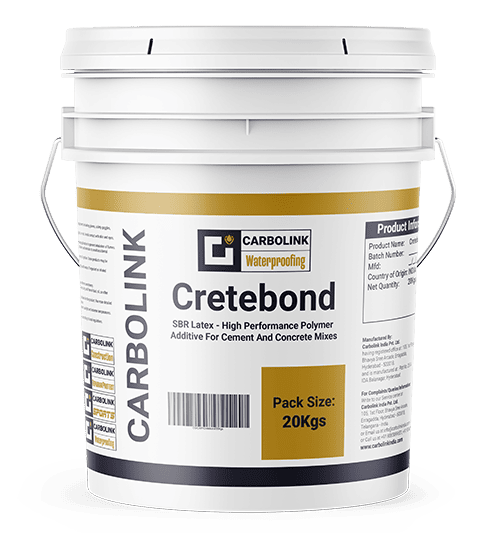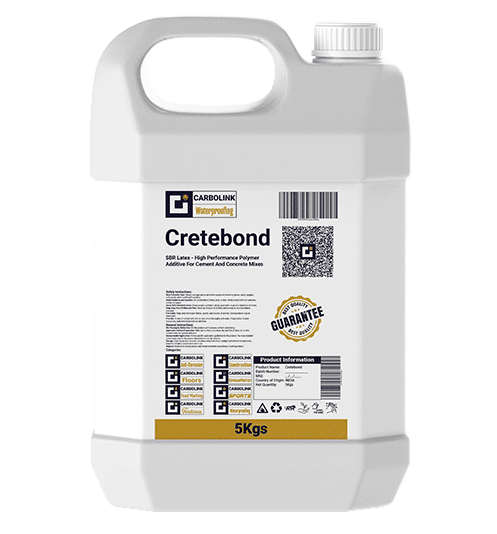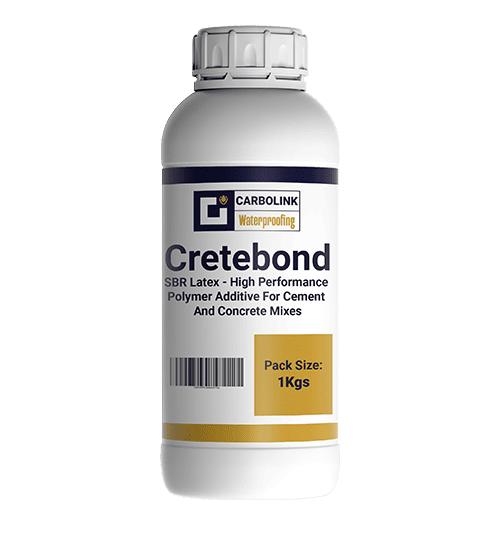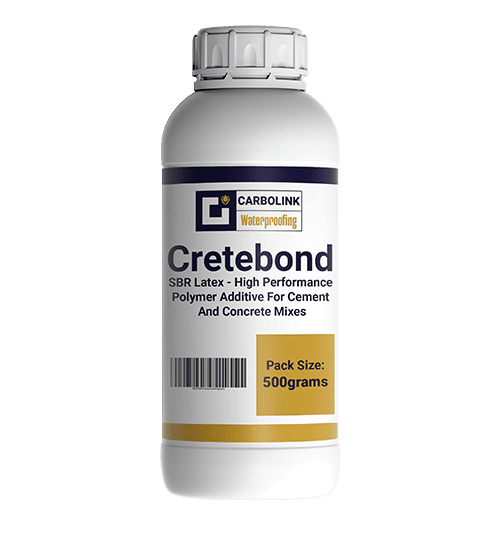Features
High performance polymer additive for cement and concrete mixes. Water-resistant, used as a temporary waterproofing sealer on
rooftops. High strength, ideal for patching, can be feathered out with minimal cracks. Non-toxic, does not cause Occupational Health &
Safety concerns.
Benefits
Water-resistant: can be used as a temporary waterproofing sealer on rooftops. High strength: ideal for use in patching mortars, can be
feathered out with minimal cracks, suitable for coving areas. Non-toxic: does not cause Occupational Health & Safety concerns.
Reduces the cement: water ratio, resulting in stronger mortar/screed.
Surface Preparation
The surface to be treated should be clean, sound, free from oil, grease, and laitance. New concrete should be allowed to cure for at
least 28 days prior to the application of Cretebond water-resistant or binder coat. New brickwork walls, sand/cement render, or screeds
should be left for at least 7 days before applying the Cretebond water-resistant or binder coat.
Mixing
Temporary Waterproofing: 1 part Cretebond: 2 parts cement (by volume).Admix for Render/Screed/Coving: Mix 1 part Cretebond with 3 parts water and use as the gauging mix (mixing water) with a 3:1 or 4:1
sand/cement mix. Binder Coat: 1 part Cretebond: 1 part water: 4 parts cement (by volume).
Application Instructions
Temporary Waterproofing: Mix Cretebond with fine cement to a lump-free consistency. Premoisten the concrete then apply a first coat
using a brush or roller to achieve a 1mm wet bed thickness. Allow the first coat to set, then apply a second coat at right angles to the
first application to ensure no pin-holing occurs.
Slurry Coat
Mix to a thin binder and spread the mix over the surface with a brush, roller, or small broom. The maximum thickness recommended is
2mm. While the binder coat is still wet, apply render or screed over it.
Render/Coving
Apply the binder coat on the prepared surface. While the binder coat is wet, apply the Cretebond mortar mix with a wood float trowel,
ensuring firm pressure on the trowel to work the render into good contact with the surface.
Screed
A minimum thickness of 15mm is recommended when using diluted Cretebond instead of water. For a thickness greater than 40mm,
reinforcing mesh is required. Using a roller, brush, or a flat trowel, coat the prepared area with a binder coat of Cretebond to improve
adhesion to the substrate. Apply the screed mix while the binder coat is still wet using a straight edge, trowel, or timber batten to level
the screed. Achieve falls in shower recesses to a minimum 1:60, internal wet areas (e.g., bathrooms) to a minimum of 1:80, and
external areas to a minimum of 1:100. Screeds should be left with a wood float finish to create a key for tiling and waterproofing. When
reinforcing the screed with mesh, apply the first layer of screed, lay in the mesh, and apply the second layer of the screed. Do not lay the
mesh directly onto the substrate.
Drying Time
Approximately 16 hours (overnight) at 23°C and 50% relative humidity when used for waterresistant or render/screed.
